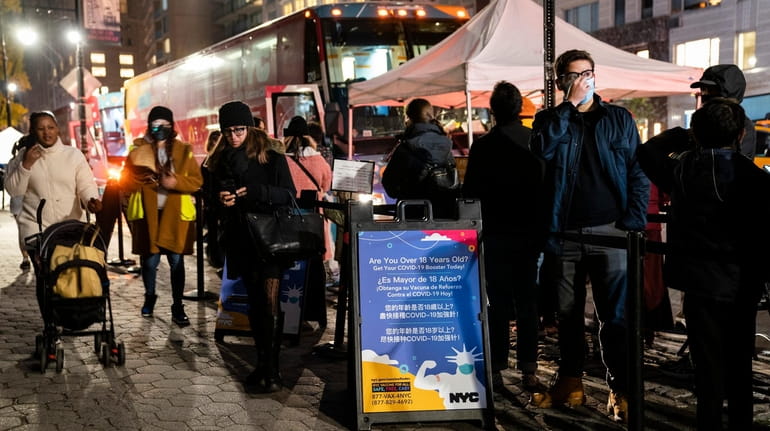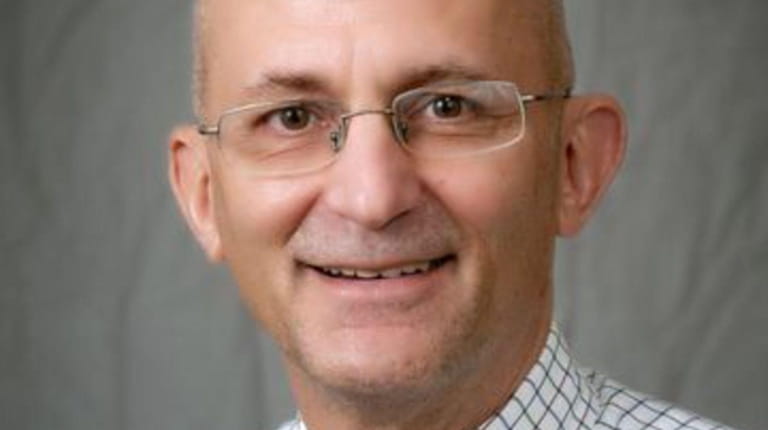New COVID-19 variant, same safety rules

People wait to receive a COVID-19 vaccine booster shot at a mobile vaccination station near Central Park in Manhattan on Thursday. Credit: AP/John Minchillo
Lately an outsized number of news headlines have been sounding the alarm about the omicron COVID-19 variant. The public is wondering whether the new variant will lead to a spike in cases in New York and be more deadly and be capable of mutating into a form that makes existing vaccines less effective.
These are understandable concerns, and the uncomfortable answer is that we don’t know a whole lot about how and when omicron will affect us.
The early returns show that it could spread at a rate that is faster than the very contagious delta variant. This is what appeared to happen in South Africa. It also appears to cause reinfections more often than previous variants.
There also are scientific reasons to believe that the vaccines, and more importantly the boosters, will be at least partially effective in preventing infection and serious disease. Initial reports show this to be the case, because an overwhelming majority of those hospitalized overseas are unvaccinated.
While the omicron variant is stealing the headlines, it’s important to take note that the spike in Long Island’s positivity rate and the large increase in overall cases is entirely due to the continued spread of the delta variant. That’s the variant we should be most concerned about right now.
In recent days, we’ve surpassed a 6% positivity rate. The cases are coming in at more than 2,000 daily on Long Island — and with people traveling to celebrate the holidays with loved ones, there’s every reason to believe the numbers will continue to rise over the next month.
We also know that many vaccinated people are more than six months beyond their second vaccine shot, which means the effectiveness of the vaccine has in all likelihood waned. The most recent data shows that only about 30% of New Yorkers eligible to get the booster have done so. If we don’t successfully increase that percentage, the spread is going to continue. Health systems and elected officials must keep talking about the importance of the booster. Without it, you’re at risk.

Dr. Bruce Farber, chief of public health and epidemiology at Northwell Health. Credit: Northwell Health
Another concern: Only about 30% of eligible children in New York are vaccinated. This is of great concern, because children are in schools, often closer than six feet apart. Schools are another potential source of spread.
None of us wants to go back to the social isolation that we endured during the first wave of COVID. Our economy, schools and communities desperately want to see an end to the frequent interruptions that have become commonplace with COVID.
We need to balance those needs with the reality that COVID is continuing to evolve and will undoubtedly be with us for the foreseeable future. The way to resolve this problem is to adhere to the easy, proven methods of mitigation. These include: vaccination with boosters for all adults, vaccination for all children over the age of 5, and mask wearing in crowded environments.
If we follow these straightforward methods, the spread of COVID will slow regardless of which variant of the virus is with us.
This guest essay reflects the views of Dr. Bruce Farber, chief of public health and epidemiology at Northwell Health.
